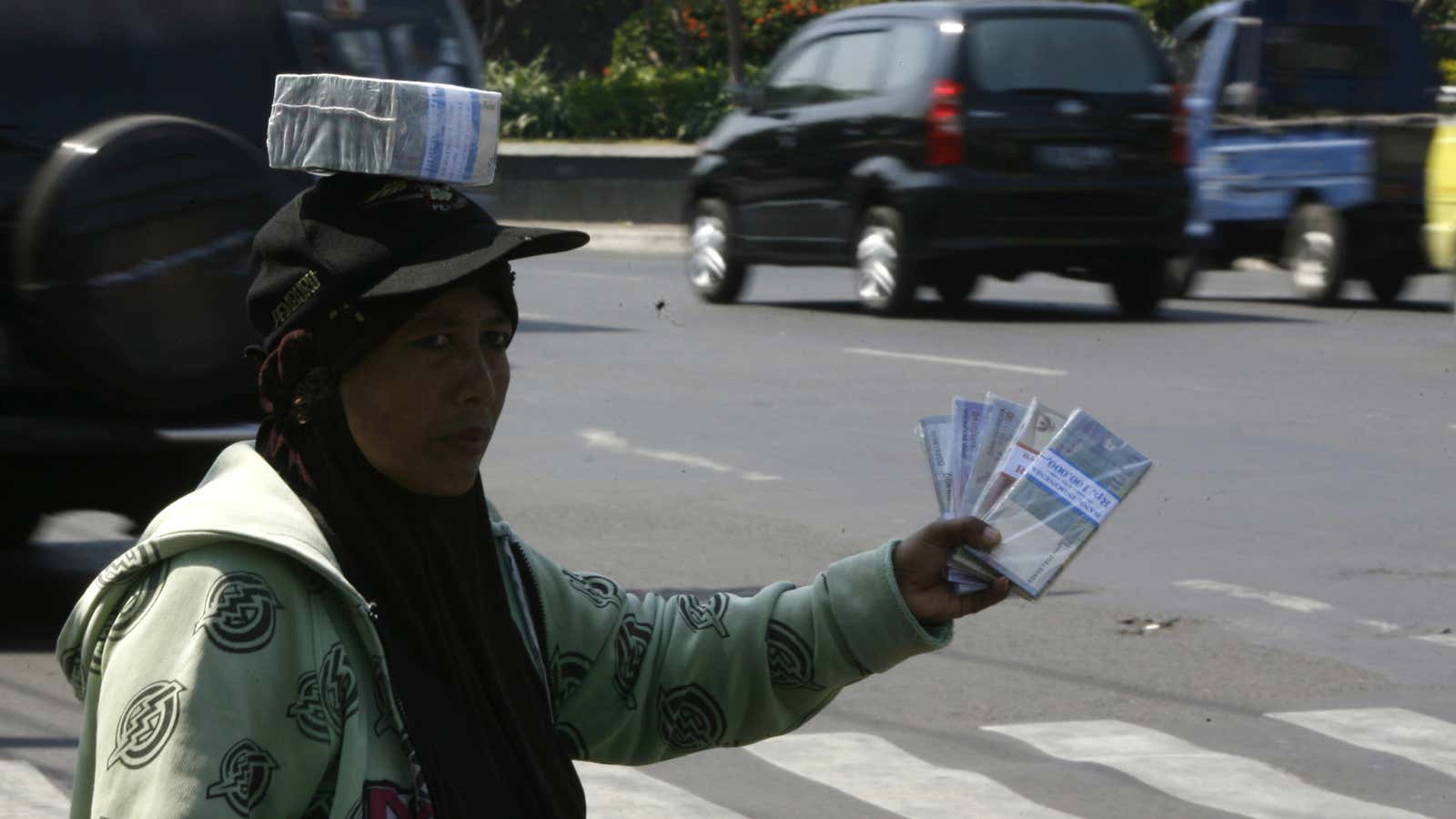Despite the dire headlines about the plummeting currencies of Indonesia and India, the crisis in Indonesia will be a much easier one to remedy for several reasons. Here’s why:
Indonesia’s economic policies haven’t flip-flopped like India’s.
With the scars of the 1997 Asian financial crisis still front of mind, Indonesia’s government seems determined to avoid the kind of muddled policy efforts that have hobbled India’s economy. As such, Jakarta reacted decisively to the 11% dive in its currency over the past three months. It has outlined a three-pronged approach to defend the Indonesian rupiah: Its central bank, Bank Indonesia, raised its benchmark interest rate by 50 basis points to 7%. The central bank also increased the rate it pays lenders on overnight deposits by 50 basis points. That’s an about-face from its scheduled policy meeting on August 15, when the central bank skirted an interest rate hike to prioritize economic growth.
India, on the other hand, has clung to policies that favor its slowing growth rates, while dabbling in efforts to shore up its currency. The Reserve Bank of India raised short-term interest rates in July, but has since then eased liquidity to juice growth.
Indonesia has been more creative in shoring up cash to support its currency.
Indonesia and India have similar current account deficits (when a country’s imports outpace exports) in relation to their GDPs (Indonesia’s was 4.4% in the April-June period, while India’s was 3.6% in the January-March quarter). That leaves little cash for the countries to throw at financial markets to shore up their currencies. But to give itself more leeway to address its currency rout, Bank Indonesia has opened a currency swap line with the Bank of Japan that will allow the two central banks to borrow from each other’s foreign currency reserves. Like India, the country needs to boost its dwindling reserves: It has spent $12 billion in the last few months alone to support its currency, leaving it with foreign exchange reserves of $92.7 billion (paywall), which is barely enough to cover imports and service foreign debts for 5 months.
By contrast, India’s policy makers have done little to address the country’s depleting foreign currency reserves. Despite an 18% fall in the rupee in the last three months alone, India’s central bank has taken piecemeal measures like selling US dollars directly to state-owned oil companies, while the government has lackadaisically set up a task force to consider a currency swap agreement with key trading partners.
Indonesia’s government is taking the long view.
Another critical difference between the two countries: Indonesia is taking longer-term measures to address the root of its currency sell-off—its soaring current account deficit. The country’s current account deficit shot up to 4.4% of GDP in the second quarter, thanks mostly to dwindling exports to China, which has begun shifting away from regional manufacturing imports. In response, the government announced a stimulus package last week to boost mineral exports and offer tax breaks to labor-intensive industries such as garments and textiles, that export at least 30% percent of their production. It plans to reduce imports by taxing foreign luxury goods like cars and yachts.
Meanwhile, the Indian government is squandering its dwindling stash of cash on playing politics. Its lower house of parliament just passed a $20 billion food security bill, which will only worsen its balance sheet—not to mention investor confidence in its flagging economy.




